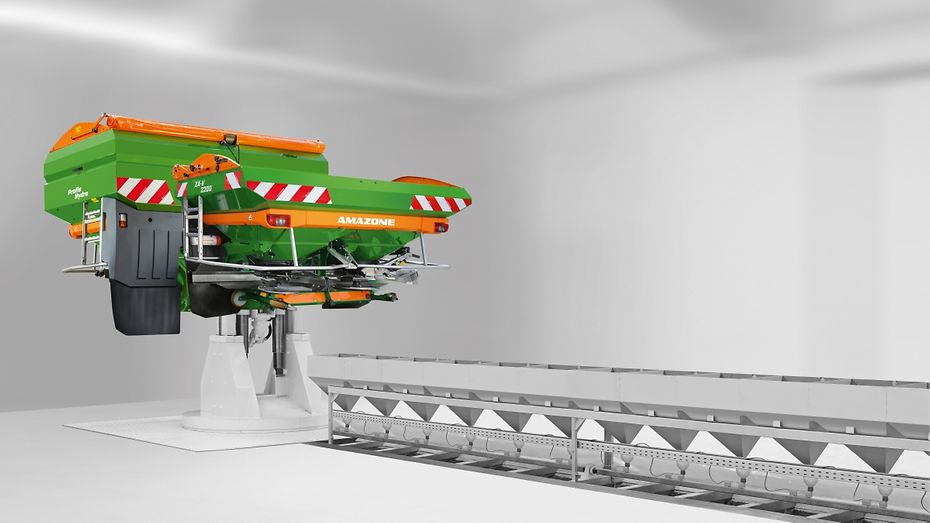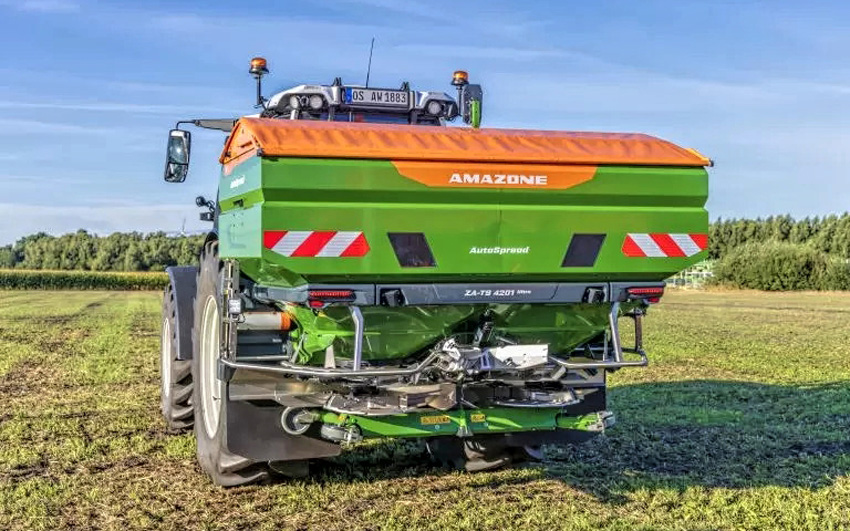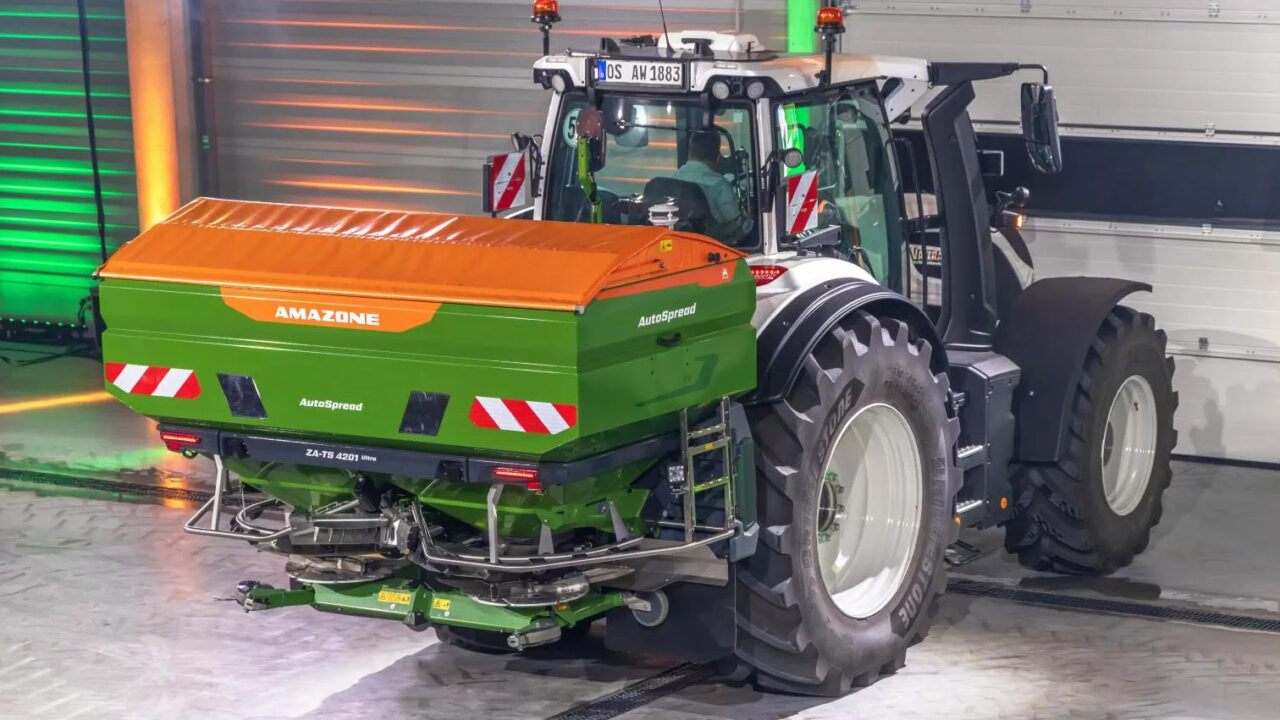Although setting a fertiliser spreader should be a relatively simple task, it is in fact fraught with problems that make consistent distribution of nutrients across the spreading width a difficult goal to achieve.
While various aids to spreader setting have improved the situation over the last 10 years or so, Amazone have now gone the full hog and developed a spreader that automatically corrects the settings in real time.
The new Amazone ZA-TS 01 has undergone years of development and over 100,000ha of successful field trials, according to the company, and its new AutoSpread feature moves the game on significantly.
Spread pattern analysis
AutoSpread works by monitoring the actual spread pattern of the fertiliser and automatically adjusting the settings to achieve optimum distribution.
This is achieved by additional sensors that measure the flight distance, although, as yet, quite how those sensors work has not been enlarged upon.
As part of the system, there is a full-time online connection to Amazone’s Spreader Application Centre, where the actual spread pattern is permanently validated, relieving the operator of the task.

Existing Amazone correction systems – such as HeadlandControl, WindControl, or Section Control – are now fully integrated via AutoSpread, which ensures that they all now work as one.
In combination with the new border-spreading system, distribution is also optimised along field boundaries.
Virtual partner
Constant validation of the spreading pattern is via an online connection to the Amazone spreading hall (SAC) via the AmaConnect unit.
It would seem that this is achieved through the creation of a fertiliser’s virtual twin, which is automatically transferred to the spreader in the field.

The actual data collected by the various sensors on the spreader is now compared with the known spread patterns of its digital twin, using an appropriate algorithm, allowing validation in real time.
Incorrect fertiliser settings are said to be reliably detected and the spread pattern is then accurately adjusted.
According to the manufacturers, due to the digital model of the fertiliser having been transferred to the spreader at the start of the operation, the system will continue to work should the network fail or reception be interrupted.

